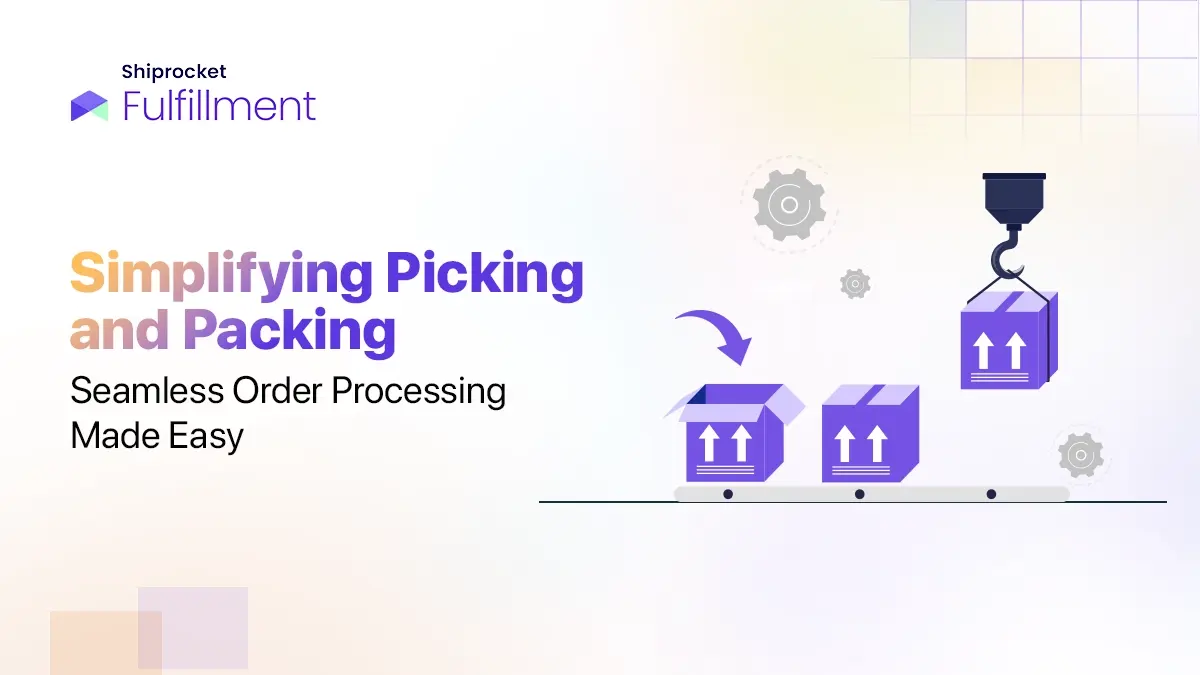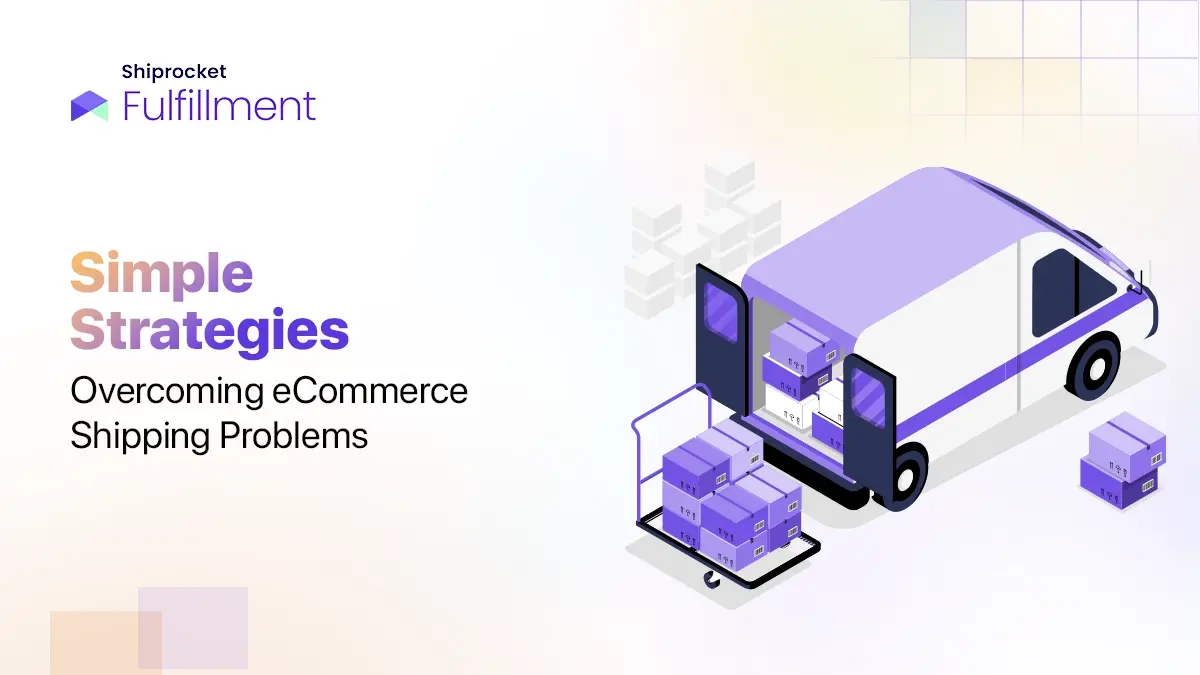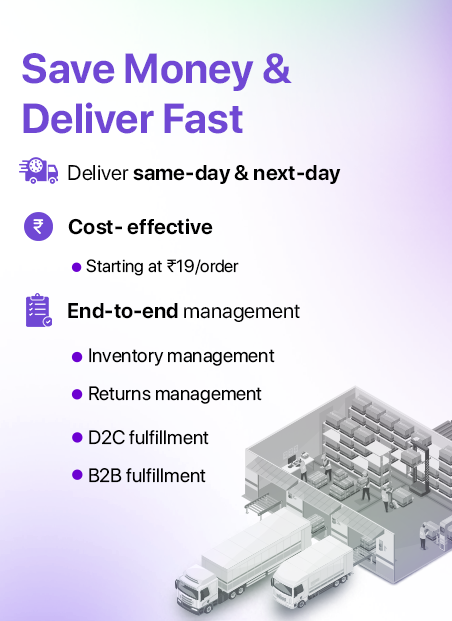Distribution management has always been a challenge for most businesses. Sometimes, the raw materials can arrive early and go obsolete even before they are put to use. Raw material can also come late, leading to the final products taking a long time to reach the market. Thus, by then, your competitor might have already seized your market share.

Effective channel distribution management is crucial for inventory and supply chain management. If all processes of distribution channel management are optimized, you can take your business to the next level. While doing this might not seem easy for you, we are here to help you. This blog focuses on how channel partnerships streamline distribution and make your distribution channel management more efficient.
What is Distribution Channel?
Before delving any further into the strategies, first, let us understand the distribution channel.
The means to get products to your consumers is called a distribution channel. The channel involves the participation of independent organizations that help in making a product available for sale and use by the end consumer. While some channels can be short, some can be long, requiring a lot of intermediaries.
There are two types of channel categories, namely direct and indirect. When the manufacturers and the consumers are connected directly, the channel is direct. A direct-to-consumer sales channel includes internet sales and direct mails.
Indirect channels involve intermediaries or the additional companies that help the manufacturer reach the consumer. For instance, a product is manufactured by the manufacturer but sold through distributors and retailers. Thus, distributors and retailers act as intermediaries who help the products reach the consumers. The indirect sales channel is typically used by the companies that operate in traditional brick-and-mortar stores.
The product cost varies for each channel. Since retailers and distributors are also entities selling products and services in the indirect sales channel, the product prices are a bit on the higher side. Alternatively, since there are no distributors and retailers in the direct channel or say the manufacturer himself is the distributor and retailer, the prices tend to be lower.
Importance of Distribution Management
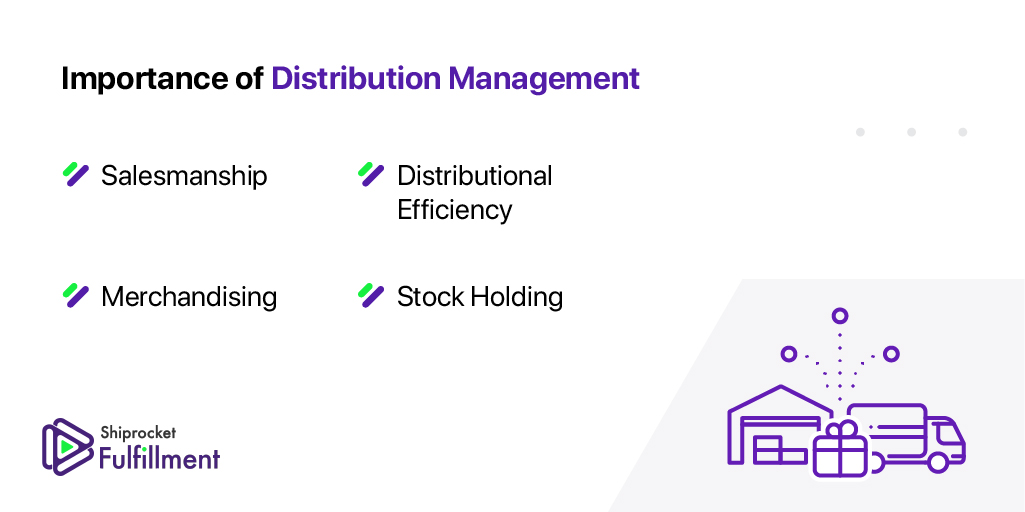
Channel partnerships streamline distribution and play a crucial role in successfully distributing the products to the consumers. The markets are growing rapidly, and thus, the complexities of product distribution have also increased. Therefore, there is a requirement for distribution channels. The following is the importance of distribution channels:
Salesmanship
Since your customers are in direct contact with your distribution channels, they can play a crucial role as a salesperson. It helps in creating a new product by promoting it in the market. You can also assure pre and post-sales service with the distribution channel. You can also use these channels to get valuable feedback from your customers.
Distributional Efficiency
You can efficiently distribute your inventory with the help of a robust distribution network. This is economical, and it narrows down the gap between you and the customers. With the intermediate channels, you can also reduce the number of transactions involved in reaching the products to the end consumers. However, these transactions are eliminated automatically when you sell your products directly to consumers through online channels.
Merchandising
The distribution channels help in merchandising. When your intermediary displays the product on his shop desk, the customer gets attracted by it. He might become curious about the product and switch to it from his regular one. Thus, you can also merchandise your products with distributions channels, which acts as a great medium for product publicity.
Stock Holding
With the intermediaries, you can also hold stock. Thus, the need for renting a space in a warehousing unit is eliminated. However, in direct-to-consumer channels, you deal directly with your customers. You can predetermine the demand for your products effectively. Thus, there is generally no need to hold inventory for a very long time. And in cases where you need to hold inventory, you can partner with third-party logistics partners. They store your inventory in their fulfillment centers and process and ship your orders on your behalf.
Distribution Channel Management Strategies
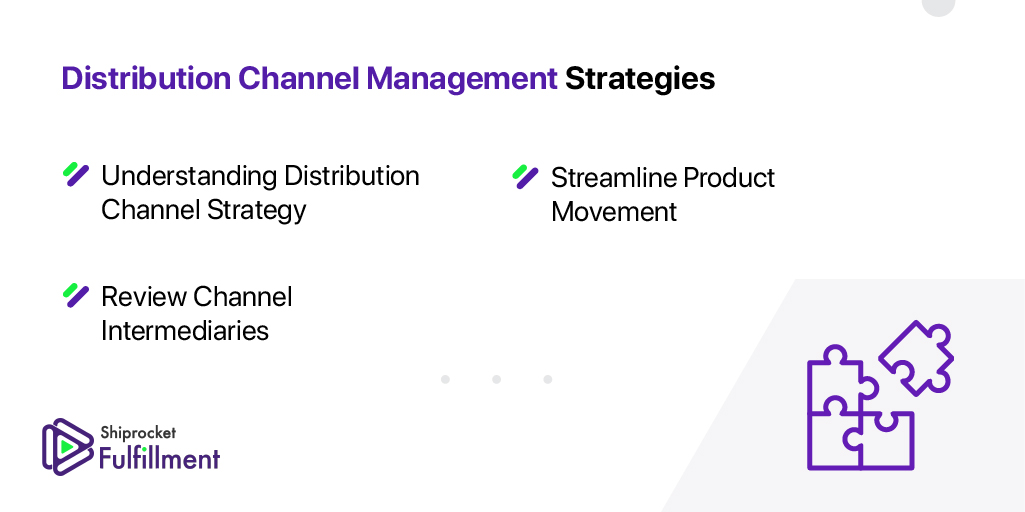
Distribution channel management can be tiresome sometimes, even for business veterans. However, we have listed down a few tips and tricks for which can help manage distributions channels efficiently:
Understanding Distribution Channel Strategy
The first step is to understand your current strategy. There are two main distribution channels discussed above – direct and indirect. But there are three other categories as well:
- Intensive Distribution: this channel is used to sell mass-marketed products. This generally includes everyday items and fast-moving consumer goods. Products like soaps and soft drinks are sold using this channel as they are extensively available in different retail shops. While using this channel, you are able to display your products at more places, making your customers more likely to purchase them.
- Selective Distribution: selective distribution is the distribution channel where you distribute your products through selective channels only. This is the best channel to distribute premium products.
- Exclusive Distribution: as the name sounds, you sell products through exclusive distributors only to distinguish them from others. This is an ideal channel option for luxury items. The products might be low in the number of sales but high in their value (price tags). Here, customers value these products so much that they are willing to travel long distances to exclusive distributors only.
All distribution channels have strengths and weaknesses, and each one suits a particular type of product. You need to weigh the strengths and weaknesses of each channel and understand if they are the ideal ones for the products you are selling.

Streamline Product Movement
Streamlining product movement is crucial for every distribution strategy. Early, late, or incomplete deliveries can hurt your business and its credibility in the market. It can hurt relations with your customers as well. Customers are less likely to buy from you again if they receive incomplete products or late deliveries.
You need to optimize your supply chain and warehousing functions to optimize. They can effectively help in delivering products faster and keeping customers happier.
Review Channel Intermediaries
Working with multiple distribution channels can sometimes be tricky. However, if you use the right mix of channels, they can benefit your business. Thus, review your distribution channels. Though reviewing channel intermediaries is mostly related to indirect distribution, you need to review channels, i.e., the sales and logistics channel for direct to consumer distribution channels as well. For the sales channel, check whether the channel (website, marketplace, etc.) you are using is the ideal one for your products or not. Similarly, review if the logistics and order fulfillment channel you have tied up with is able to give your customers the best experience in terms of timely order delivery.
Distribution channels are not only limited to the movement of products. It involves intermediaries that can either make or break your business. They act as the medium between you and your business. Thus, they need to be well-maintained and improved from time to time to be more effective and beneficial for your business.


